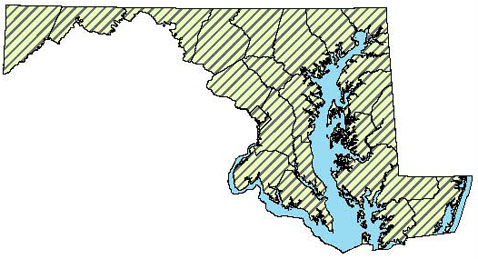Field Guide to Maryland's Frogs and Toads (Order Anura)
Main_Content
Wood Frog (Lithobates sylvaticus) | 
Adult Wood Frog, photo courtesy of John White
| | Former Name: |
Size:
|
Appearance: |
Habitats:
Photo of Habitat for Wood Frog courtesy of Rebecca Chalmers
|
How to Find: |
Distribution in Maryland:Wood frogs are common throughout Maryland.  | | For More Information: |
|
